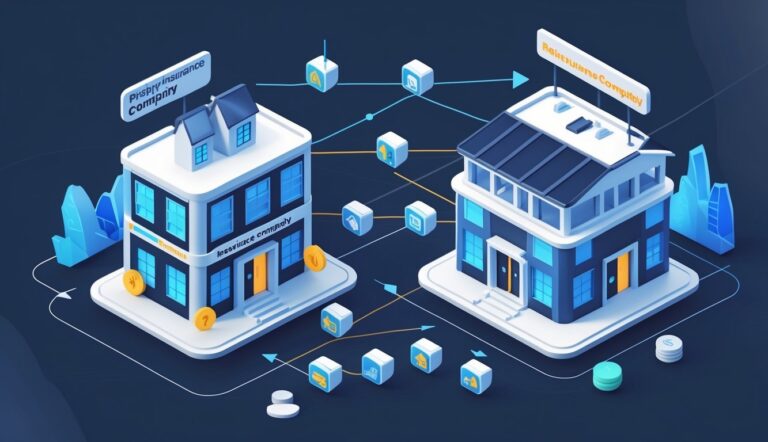Understanding Applications
Applications play a crucial role in modern technology, particularly in various industries such as insurance.
They serve as tools to enhance productivity, streamline processes, and manage substantial amounts of data efficiently.
Application Fundamentals
An application, or application software, refers to a computer program designed to carry out specific tasks for users.
In the context of the insurance industry, applications help manage policy information, process claims, and facilitate communication with clients.
These applications operate within a system’s software framework, enabling efficient data management and task automation.
By utilizing applications, you can improve data accuracy and accessibility.
Many applications allow for real-time updates and notifications, which are vital for keeping clients informed throughout the insurance process.
Understanding how applications function is key to maximizing their potential benefits in your daily operations.
Types and Categories
Applications can be categorized based on their specific functions and the type of tasks they perform.
Common types include:
- Business Applications: Designed for tasks like policy management, underwriting, and billing.
- Collaboration Applications: Facilitate communication and teamwork, crucial for project management in insurance.
- Data Analysis Tools: Help analyze market trends, claims data, and customer feedback.
Identifying the right type of application for your needs can enhance operational efficiency.
For instance, a robust claims processing application can significantly reduce the time required to handle claims and improve customer satisfaction.
Technological Framework
The technological framework surrounding applications often includes various programming languages, operating systems, and databases.
Understanding this framework is essential for effective application utilization.
Insurance applications may run on cloud-based systems for better scalability and accessibility.
Moreover, these applications often integrate with other tools, allowing seamless data transfer and enhanced usability.
Tools like CRM systems or data analytics platforms can amplify the capabilities of your core applications, enabling you to make informed decisions based on comprehensive data analysis.
Depending on your organization’s technology stack, comprehending these frameworks can help you choose the most suitable applications and ensure they align with your business goals.
Design and Functionality

In the context of application design, a focus on user interface and operational efficiency is crucial.
You need to understand how these elements intertwine to create a seamless experience tailored to the insurance industry.
User Interface Design
Your user interface (UI) is the first point of interaction for users.
A well-designed UI must be intuitive, enabling users to navigate effortlessly through options.
In an insurance application, this includes clear labels, easy access to policy information, and straightforward claim submission procedures.
Using consistent visual elements helps to guide users.
Consider employing color coding for different policy types and interactive elements like dropdown menus for efficient editing.
A clean UI minimizes confusion, allowing users to focus on their tasks without unnecessary effort.
Application Operations
The operations of your application should align with user expectations.
Each action you design must be purposeful, enabling users to complete specific tasks such as filing claims or reviewing policy details with ease.
The application must be responsive, performing actions swiftly without lag.
Ensure that common operations, like editing policy details, are straightforward.
Users should be able to input information with minimal steps.
This reduces frustration and enhances overall efficiency, making the application a reliable tool in managing their insurance needs.
Functional Parameters
Functional parameters define what tasks your application can perform.
Prioritize key functionalities that support users in the insurance sector, such as real-time policy updates, automated claim tracking, and easy access to documents.
You should also consider how well your application handles various operational scenarios.
This includes ensuring the system can manage simultaneous requests without compromising performance.
Incorporating user feedback into functionality improvements will help you tailor the application to meet specific user needs effectively.
Clearly defined functionalities help streamline user experiences, making it easier for them to achieve their goals with minimal effort.
Applications in Various Contexts

Understanding the applications of the term “application” reveals its significance across various sectors.
Each context offers unique insights into how these applications function, particularly within the insurance industry and beyond.
Commercial and Business Use
In the commercial sector, applications serve crucial roles in streamlining processes and enhancing productivity.
Software solutions are commonly used for tasks like customer relationship management (CRM), project management, and financial analysis.
For instance, companies utilize insurance applications to assess risk, process claims, and manage client data.
Effective application of these tools can lead to increased efficiency and reduced operational costs.
Insurance professionals may apply these systems to support employment applications, ensuring that potential hires align with industry standards.
Moreover, integrating new information into existing systems can significantly enhance decision-making capabilities, impacting overall success in the competitive market.
Academic and Educational Application
In the academic realm, the concept of application often revolves around the utilization of theories and research.
Students and educators apply this term within various studies to demonstrate how knowledge can be put into practice.
For example, insurance policy education involves applying theoretical knowledge to real-world scenarios, preparing students for careers in risk assessment or claims handling.
Schools often implement software applications to facilitate learning and support administrative tasks, which helps students apply their knowledge in practical environments.
Hands-on projects and internships in the insurance field allow students to gain invaluable experience, applying classroom concepts in real-life settings.
This practical application enhances their ability to succeed in their future careers.
Personal and Home Use
On a personal level, applications significantly impact how individuals manage their daily lives.
From budgeting apps to health insurance management tools, these applications provide essential resources for personal organization.
You can apply various software solutions to track expenses, manage loan applications, or even access insurance policies.
Utilizing technology simplifies these processes, allowing you to complete tasks efficiently.
Additionally, personal applications enable you to stay informed about industry updates and changes, fostering a better understanding of your options.
For example, staying updated on changing insurance policies can help you make informed decisions regarding your coverage and financial planning, ultimately benefiting your overall quality of life.
Application Processes

Understanding the steps involved in the application process is crucial for success.
This section details how to navigate the submission procedure and what to expect during the application review and decision stages.
The Submission Procedure
When you begin an application, your first step is to complete the necessary forms.
This typically includes a detailed application form where you input your personal information, qualifications, and any requested documents.
You must ensure that all fields are accurately filled out and that you meet the qualifications set forth by the institution or organization.
Pay close attention to deadlines, as missing them could disqualify your application.
Once completed, you can submit the application via the designated method, which may include online submission or physical mailing.
After submission, be prepared to provide any additional documentation or clarification if requested.
Application Review and Decision
After submission, your application enters the review process.
This stage involves evaluation by professionals who will assess your qualifications based on the guidelines established.
Your documents are analyzed for completeness, accuracy, and adherence to the rules outlined in the application requirements.
The review team may also compare your petition against other applications, scrutinizing factors such as your background and experience.
Once the review is completed, an admission decision will be made.
You will typically receive written notification, detailing whether your request has been accepted or declined.
Staying patient and perseverance during this stage is vital, as it may take time before you receive a final outcome.
Applications Beyond Technology

You will find various essential applications outside the realm of technology, particularly in the medical and agricultural fields.
These applications significantly impact health and productivity, providing valuable benefits.
Medical and Therapeutic Uses
In the medical field, applications such as ointments, lotions, and salves play a crucial role in treatment.
These products often serve as a protective layer that soothes skin irritations or injuries.
For instance, a healing ointment can effectively alleviate soreness and expedite recovery by forming a barrier against external irritants.
For sore muscles, topical treatments can penetrate the skin to provide targeted relief.
Some formulations utilize heat to enhance circulation in painful areas.
When administering these products, it’s vital to spread a sufficient amount over the affected area, ensuring complete coverage.
Agricultural Applications
In agriculture, the use of fertilizers is vital for enhancing soil quality and promoting plant growth.
Fertilizers provide essential nutrients that may be lacking in the soil, leading to healthier crops and improved yields.
You can apply fertilizers to gardens and lawns, such as grass, to maintain their vitality.
Additionally, using protective layers on plants helps shield them from harsh environmental conditions.
This covering can prevent damage, ensuring crops remain robust throughout their growth cycle.
Properly spreading fertilizer and other treatments is essential for maximizing their effectiveness, highlighting the importance of careful application techniques.
Frequently Asked Questions

Understanding the term “application” involves exploring various contexts, including computer science, education, grammar, and real-world examples.
Each of these areas provides a unique perspective on how applications function and are defined.
What constitutes an application in computer science?
In computer science, an application is a software program designed to perform specific tasks for users.
Examples include word processors, spreadsheets, and web browsers.
These applications allow users to interface with the system and accomplish practical objectives.
How is the concept of an application utilized in educational settings?
In educational contexts, applications might refer to software programs that facilitate learning.
These can include learning management systems, educational games, and resource databases.
Such applications enhance the educational experience by providing interactive and accessible tools for both students and instructors.
In what ways is the term ‘application’ used in English grammar?
In English grammar, the term “application” refers to the act of putting something into operation or practice.
It can also refer to the relevance or suitability of a rule in a specific situation.
Thus, understanding the application of grammatical rules is essential for effective communication.
What are some clear examples of applications in a real-world context?
In the real world, applications can be found in various sectors, including finance, healthcare, and transportation.
For example, insurance applications allow users to file claims, obtain policy information, and manage accounts.
These applications improve efficiency and customer engagement in daily operations.
Could you provide synonyms for the term ‘application’?
Synonyms for “application” include “usage,” “employment,” “utilization,” and “implementation.” Each synonym emphasizes a slightly different aspect of how something is applied or used.
Depending on context, you might choose one synonym over another for clarity.
What does the phrase ‘term of application’ refer to?
The phrase “term of application” refers to the specific context or period during which a particular rule, principle, or agreement is relevant.
In the insurance industry, this may pertain to the duration a specific policy or coverage remains active.
Understanding this term helps clarify obligations and expectations within contracts.






